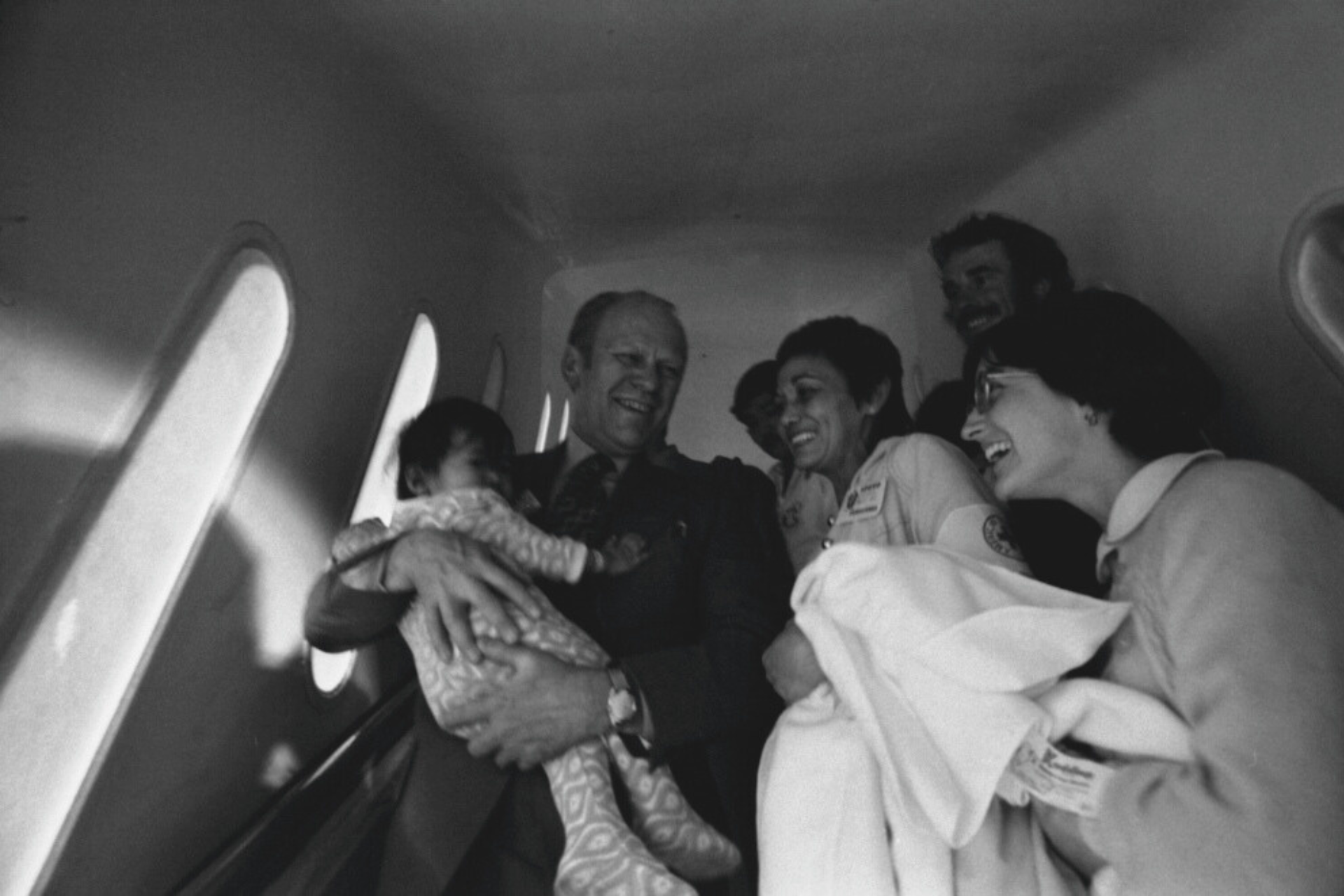In 1975, as South Vietnam fell to North Vietnam, President Gerald Ford ordered the evacuation of thousands of infants from Vietnam. Many were thought to be the children of U.S. servicemen. Orphanages in Vietnam — which in many cases had run out of food and other supplies — were emptied, and some parents asked U.S. military to take their children to safety. The babies were strapped into airplane seats in small cots, or strapped to the floor in the cargo holds of military transporters. Thousands of people in the United States and elsewhere signed up to adopt the babies. The initiative was called Operation Babylift.
The infants were taken to military processing centers, where they were met by medics who gave them physical exams and arranged for care for those who needed medical attention. About two thousand of the babies ended up in the United States. President Ford met the planes in San Francisco and was photographed cuddling infants from the flights.
A humanitarian effort
Operation Babylift was a humanitarian effort, intended to provide safe homes for infants as South Vietnam collapsed and surrendered to the aggressors from North Vietnam.
But there was controversy about the operation, too. Some critics accused the U.S. government of using the opportunity to improve public perception of an unpopular and unsuccessful war, while others claimed that the operation was chaotic and inadequately planned. The first flight out of Vietnam in the operation had an accident; a cargo door blew off the plane, which was forced to land unexpectedly. 78 children died, along with nearly as many adults. This tragedy encouraged complaints about the operation, even though it also encouraged many Americans to volunteer to adopt babies from the Babylift.
Many aid workers hold that the children would probably not have survived had they remained in Vietnam. They also feared that children of American servicemen would face discrimination as they grew up.
Controversy about consent
In addition to concerns about the removal of the children from Vietnam, there were also concerns about the adoptions. While most of the children came from orphanages, not all of the babies were orphans. In the rush to rescue the children from the coming warfare, it was not clear that all the parents of the children gave their consent for their children to be adopted.
Orphanages in Vietnam were sometimes used as temporary shelters for children whose families felt that they could not care for them. Sometimes the parents intended to retrieve their children once their lives were safer and more settled. In some cases, these children were old enough to report that they had families in Vietnam once there were interpreters available, but often they did not have the option to return to their families. Infants in this situation were not able to tell anyone, since they could not yet speak. Most of the children did not have paperwork that allowed workers to be sure about the question of parental consent.
Later, some Vietnamese parents sued for the return of their children, but most of the cases resulted in court decisions keeping the children in the United States. Only about a dozen children were reunited with their families.
Extreme cases
In wartime and other extreme situations, it can be difficult to follow procedures. At the time, half a century ago, adoption laws were different and adoptions were usually closed. In hindsight, it may be easy to see problems with Operation Babylift, but at the time, it seemed like the best solution to a heart-wrenching problem.
Many of the babies from Operation Babylift, now adults, have grown up happily in their adoptive families and also found their birth families in Vietnam.
Adoption law today prioritizes clear consent and usually provides for open adoption, allowing continued contact between adopted children and their birth mothers.
Heimer Law specializes in adoption. Contact us today if you are considering adoption.
Inquiry Form
